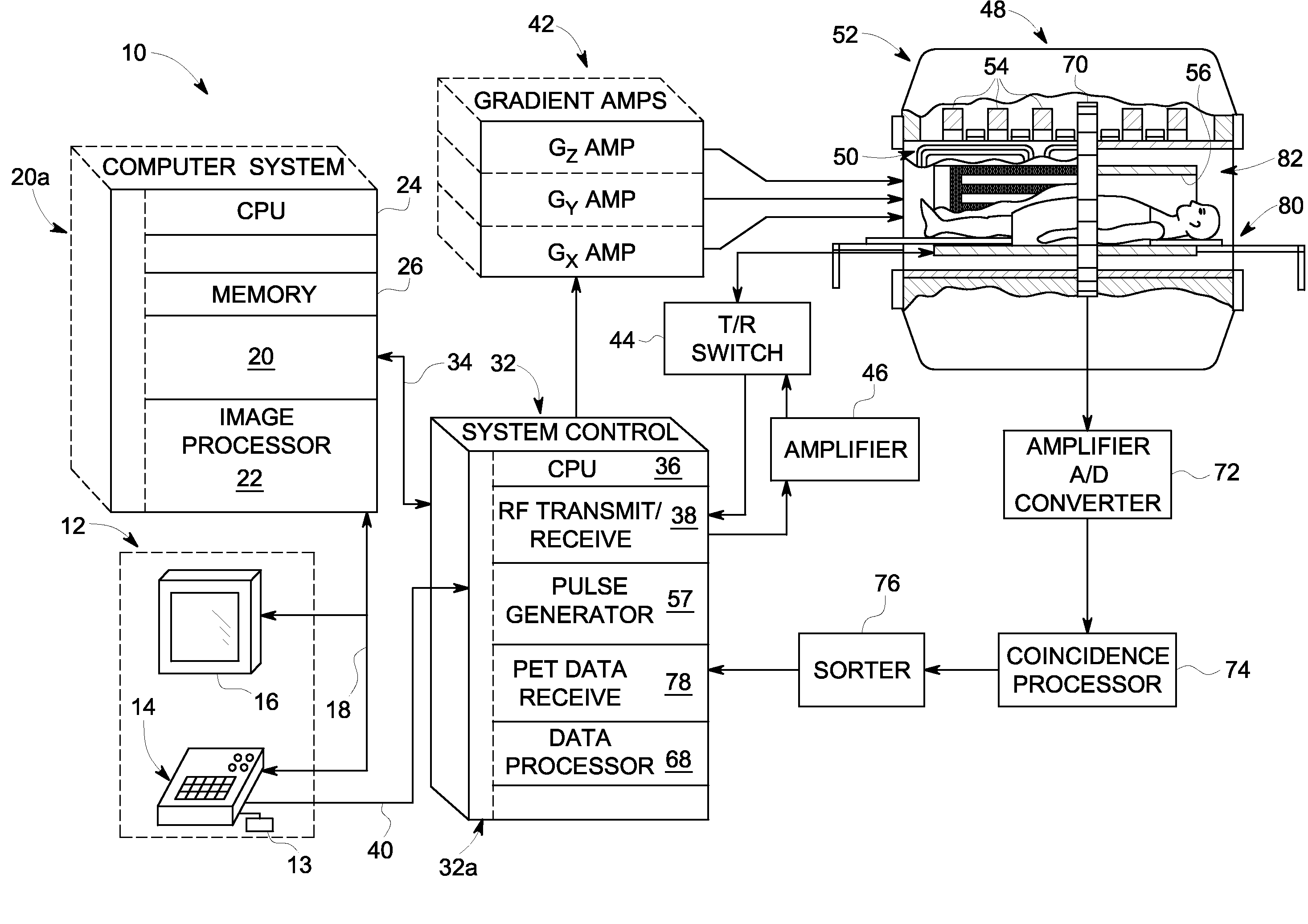Surface stationary array coil structure for multi-modality imaging
a stationary array and imaging technology, applied in the field of medical imaging, can solve the problems of reducing the pet signal to the detector, degrading the image quality, and mutual annihilation, and achieve the effect of reducing image degradation and improving mr image quality
- Summary
- Abstract
- Description
- Claims
- Application Information
AI Technical Summary
Benefits of technology
Problems solved by technology
Method used
Image
Examples
Embodiment Construction
[0024]A stationary posterior RF coil structure for use in a stand-alone MR imaging system or hybrid PET-MR system is provided. The RF coil structure is constructed so as to arrange RF coil elements thereon so as to provide a constant and uniform gap between the entire set of RF elements and a patient cradle surface so as to enable good MR image quality. The RF coil structure is further constructed to include structural elements that enable the cradle to roll over the posterior stationary RF coil, as the cradle moves thru the magnet bore, without deforming the RF coil elements—so as to enable stable image quality with any patient mass. The stationary posterior RF coil structure is still further constructed to have a minimal mass in the PET detector region (i.e., PET gap) by providing minimal electrical and mechanical components in the PET gap and moving all large mass components away from the PET gap, so as to enable good PET image quality.
[0025]According to embodiments of the invent...
PUM
 Login to View More
Login to View More Abstract
Description
Claims
Application Information
 Login to View More
Login to View More - R&D
- Intellectual Property
- Life Sciences
- Materials
- Tech Scout
- Unparalleled Data Quality
- Higher Quality Content
- 60% Fewer Hallucinations
Browse by: Latest US Patents, China's latest patents, Technical Efficacy Thesaurus, Application Domain, Technology Topic, Popular Technical Reports.
© 2025 PatSnap. All rights reserved.Legal|Privacy policy|Modern Slavery Act Transparency Statement|Sitemap|About US| Contact US: help@patsnap.com



